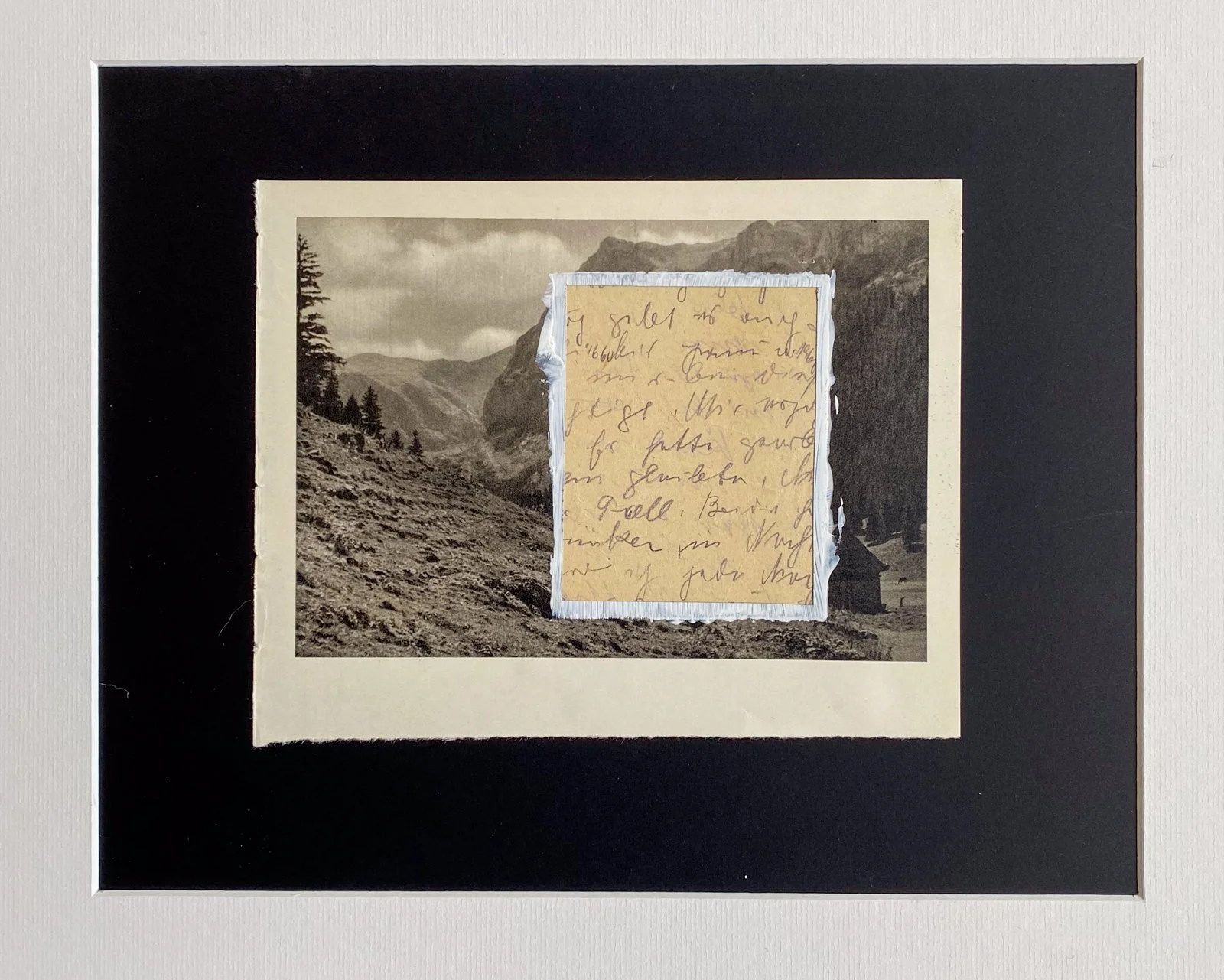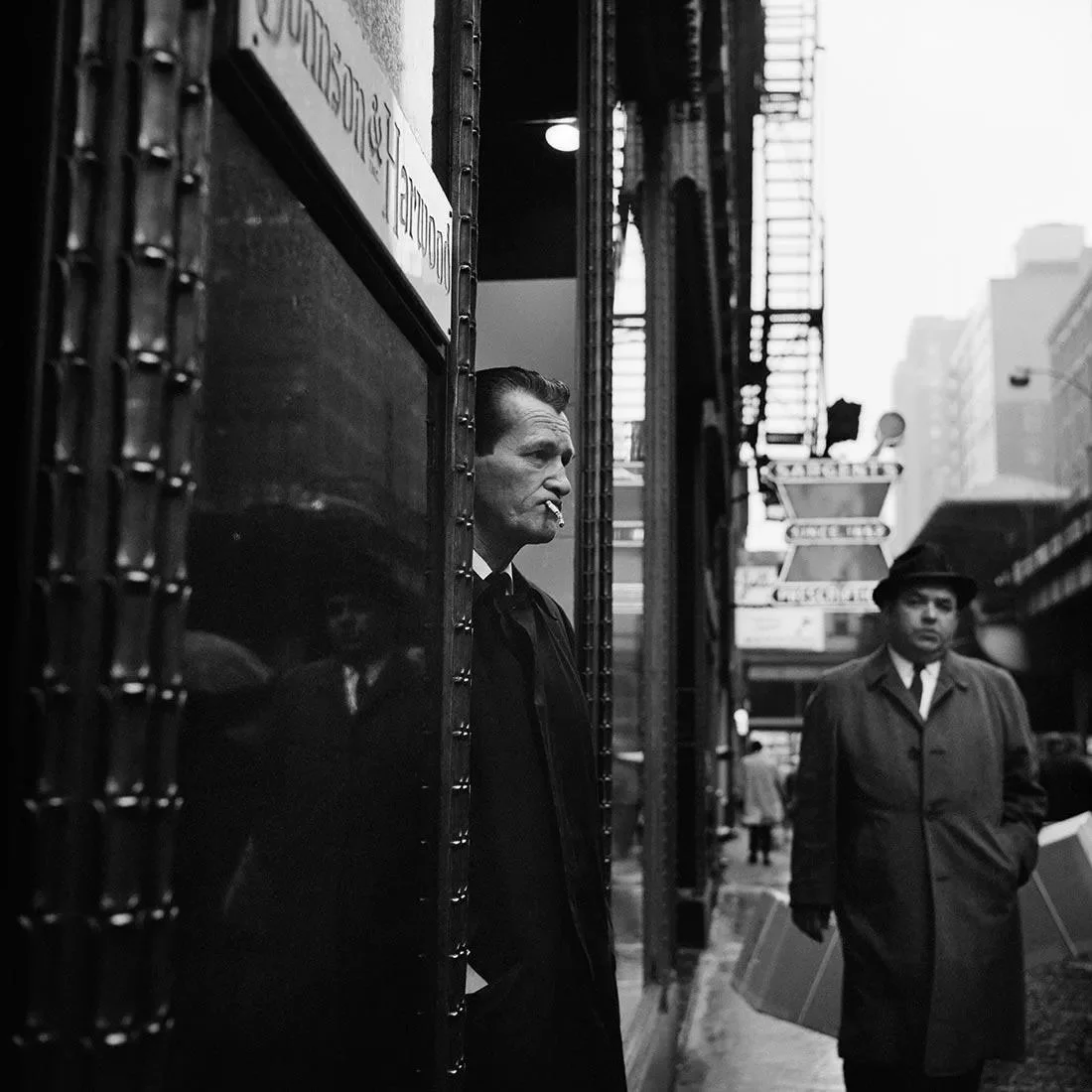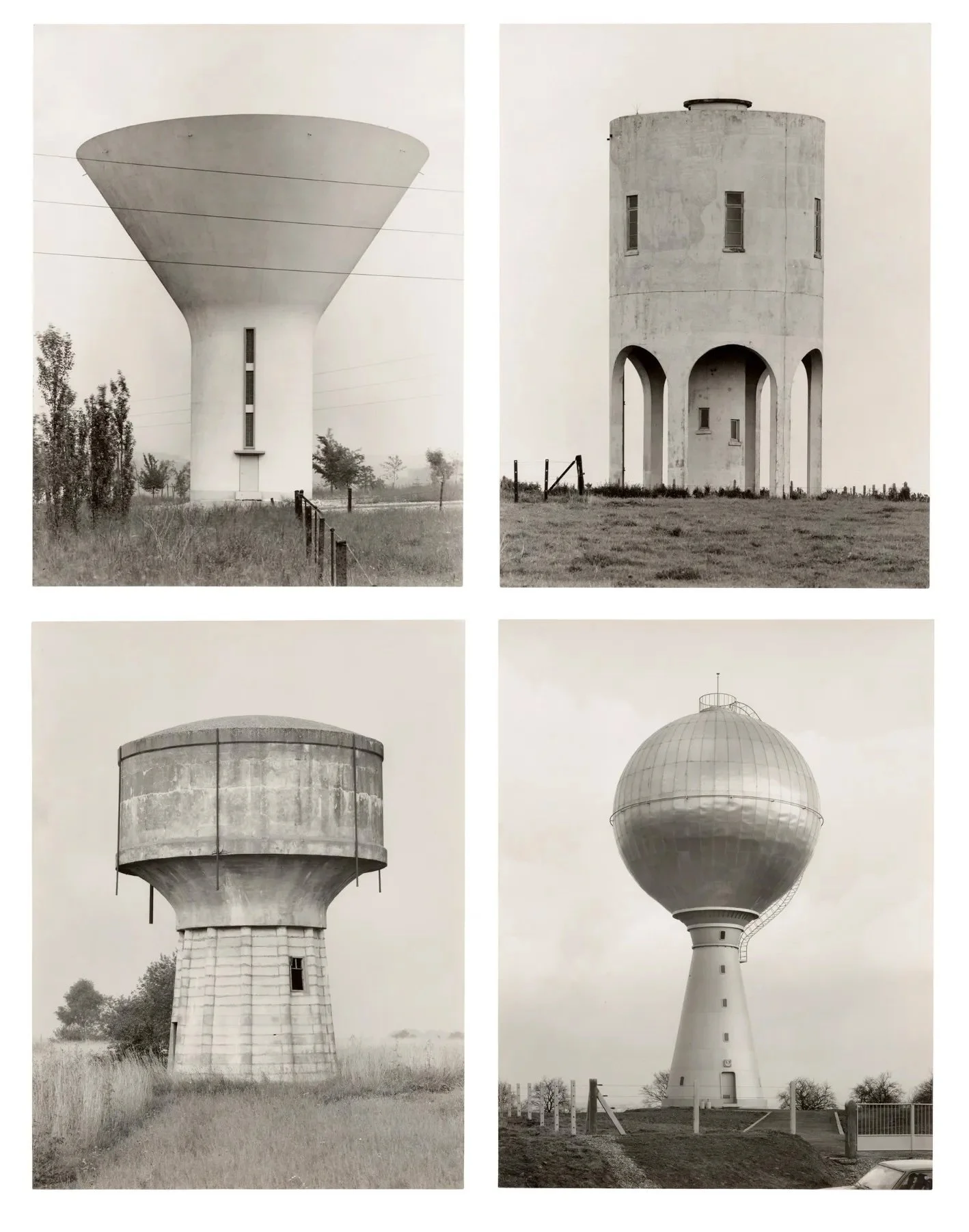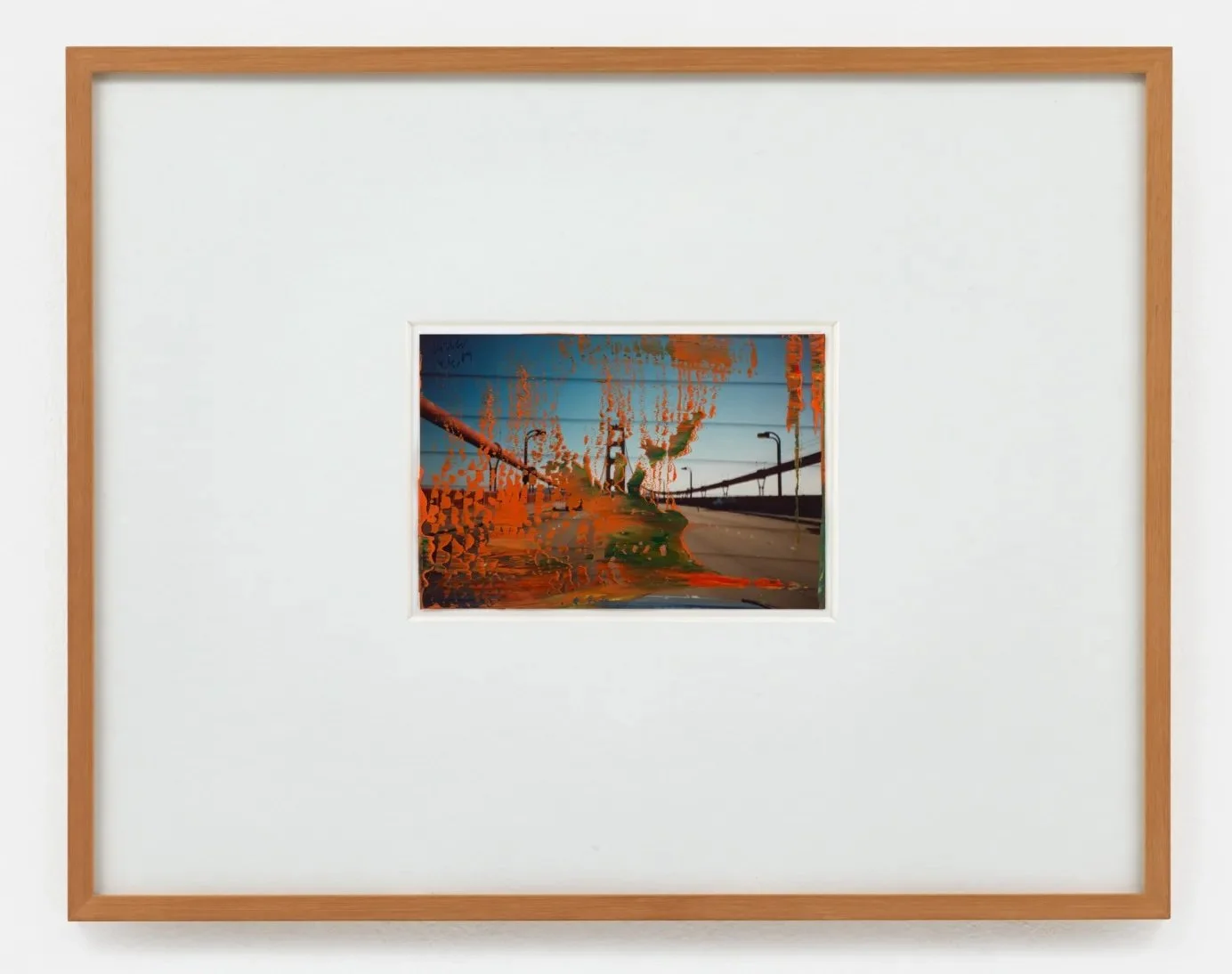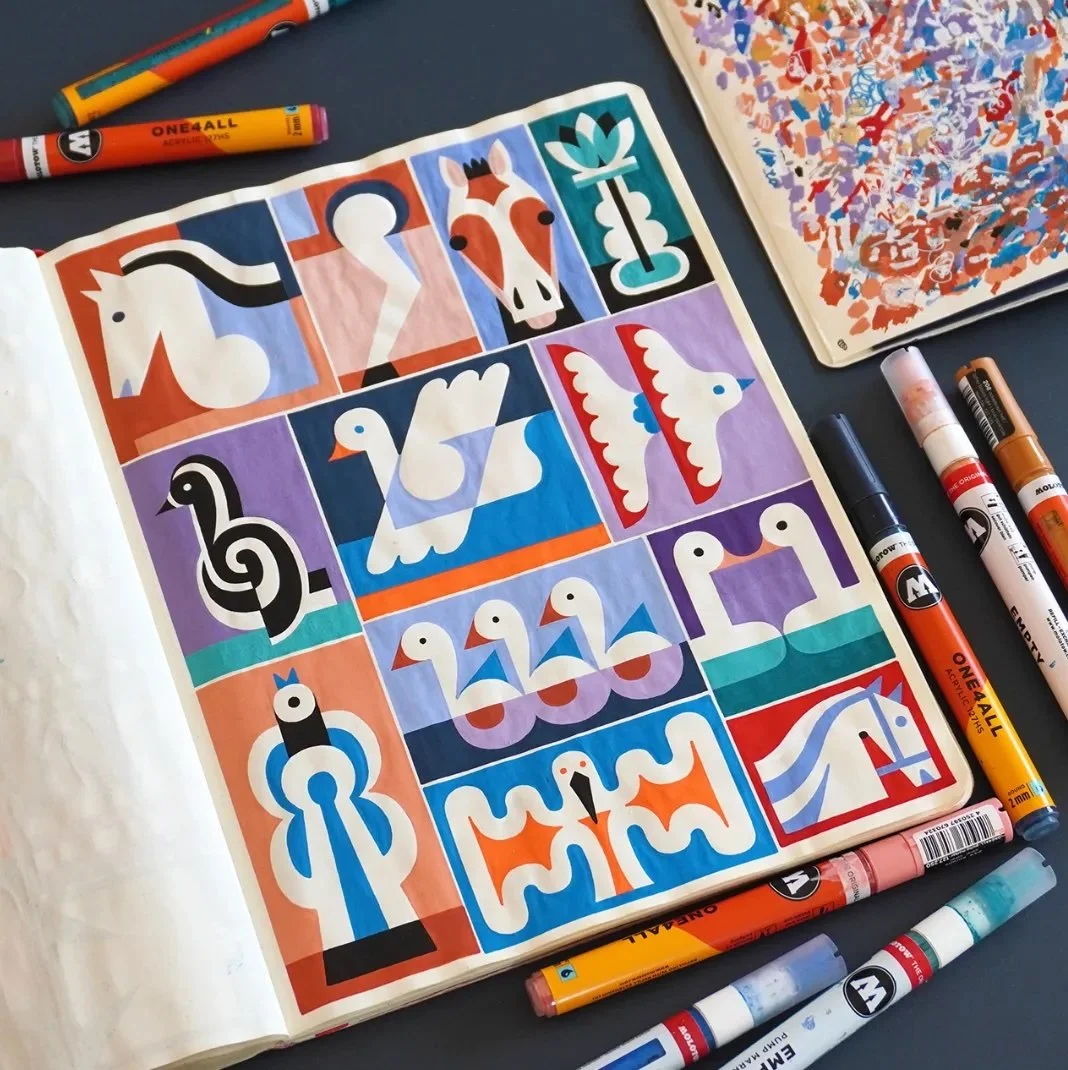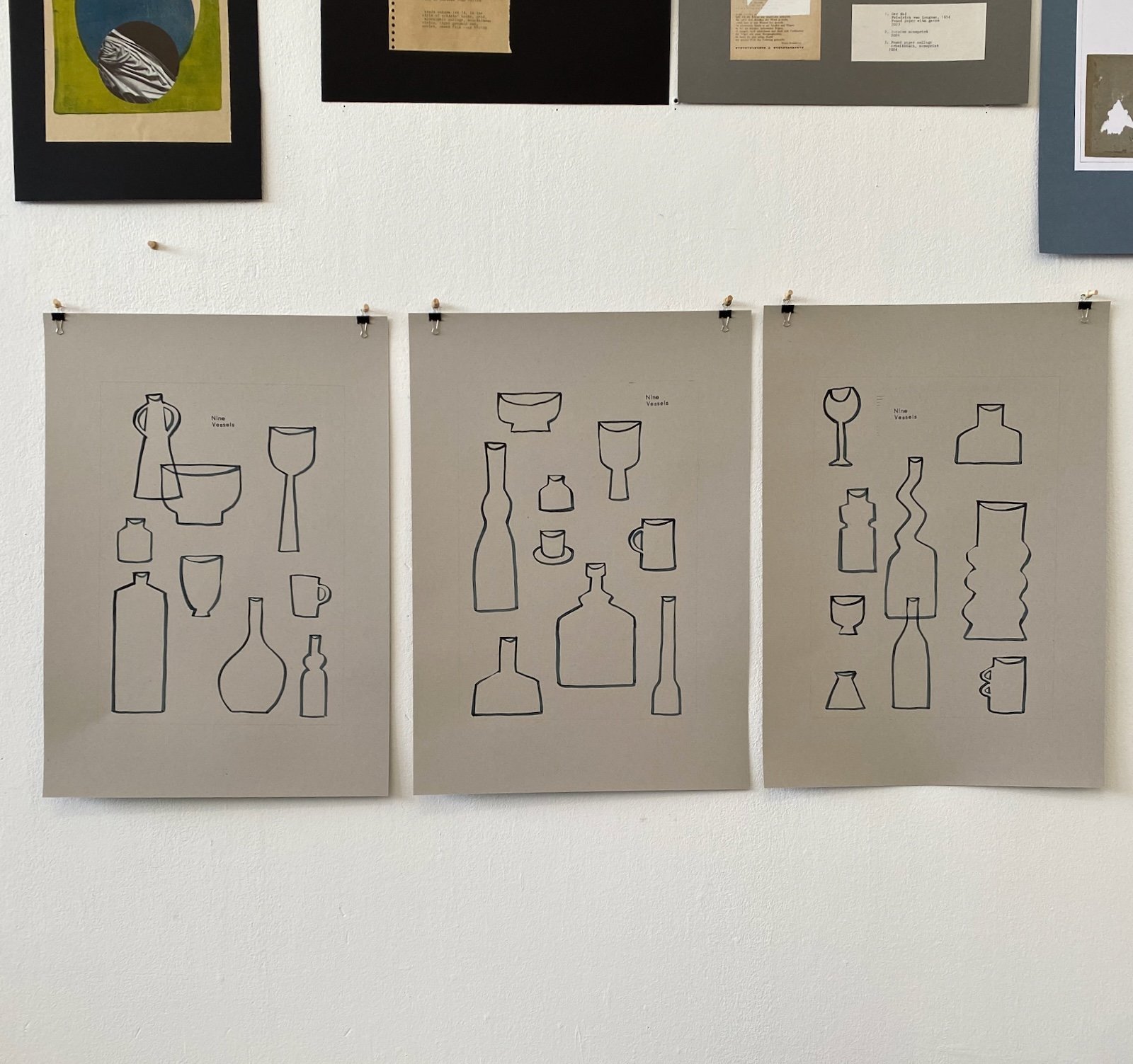Asking Questions and Spending Time
Recent collage work
On a recent to the Neue Nationalgalerie, one of my favorite Berlin museums, two things, neither particularly new, kept bouncing around my head:
One way of looking at art is to imagine the artist telling you, "I think this is worth looking at", and to then figure out why.
I like repetition. I like seeing what the artist can't stop thinking about.
These two are obviously connected. Watching an artist go back to the same theme again and again, is evidence of either their believing that, or wondering if, a subject is worth looking at. They can't stop looking at it themselves. Repetition is intent. It's time spent with a theme, and time spent with materials. Repetition is taking something seriously and making the time to do so. There's no expectation, or even hope of getting it "right" in one drawing (painting, etc.).
One of my go-to opinions when I look at art and talk to people about art is how important craft is to me. Generally speaking I want a painting to be well-painted, a drawing to be well-drawn (extrapolate to any other medium). Craft is a control of materials that doesn't come easily or quickly. In the context of fine art, I want to see that the artist has put in the work, and has taken the time to be good at what they do. I believe that matters. This doesn't preclude happy accidents or the artist surprising themself. But a happy accident only happens once. If an artist wants to keep working with whatever surprised them, we're back to craft. And this in no way means that only academically trained artists reach this level. There are countless examples of outsider and self-taught artists who have rigor, who have worked and worked at their craft, because what they were trying to do needed to be done over and over again.
Vivian Maier
Henry Darger, Vivian Maier, and Daniel Johnston as great examples of this.
It has to be acknowledged that this "requirement" excludes many, many people who have the desire to create art but don't have the time and/or material resources. I don't know how to square my belief that art truly is for everyone with the conviction that creating fine art is a serious practice, except to acknowledge that I'm only talking about what I want and expect from art. Literally no one else has to share my opinion - and that's okay.
I think this is worth looking at.
Bernd & Hilla Becher
Three of my favorite artists (who I've mentioned in a newsletter at least once already) who kept returning to a theme are Bernd & Hilla Becher and Giorgio Morandi.
Bernd & Hilla Becher are one of the most perfect encapsulations of the idea, "I think this thing is worth looking at." Their simply-composed photographs of grain silos, water towers and countless other industrial buildings is a systematic, years-long study of one topic. Why did they have to take so many photographs of these buildings? Who cares about these buildings?
Similarly, why did Morandi have to paint bottles so many times? Couldn't he have left the house more often?
Sometimes the artist will tell you why they think a theme is worth your attention, and sometimes not. I'd argue that in the latter case, often the artist doesn't know themselves. Their returning to the theme is their way of asking themselves the question. Maybe if they had an answer, they could move on. But they didn't, and if you come to their work with this thesis statement in mind, "this thing is worth looking at", you have the opportunity to create your own relevance, or your own reasons for why this is interesting.
“If the artist is happy with the work they’re creating and the viewer is enlivened by the work they’re experiencing, it doesn’t matter if they see it in the same way.” Rick Rubin
This way of thinking about work has been a great help to me in not dismissing a work of art because it's (in my opinion) not exhibiting the highest levels of craft. Instead of thinking, "it's cool, but where are the good paintings", I can have a more interesting experience if instead I ask, "why is this worth looking at?" And when you can do this with a series of works, it becomes even more engaging. When you see one image alone, unless you know the artist's history, you've no way of knowing if this one work was a fleeting idea, or part of a long exploration.
Gerhard Richter
This idea first started germinating in the Gerhard Richter exhibition. There were several of his larger works there, including his Birkenau series, and then a lot of smaller works. The smaller works felt like they were, at least in part, investigations of how ink/paint/watercolor reacts to different mediums and not fully realised images. There were also a whole series of his overpainted photographs.
I don't know that any one of these overpainted photographs is an outstanding work of art (apologies to the Richter super-fans). What is one overpainted photograph and how is it different from a photograph that someone spilled paint on when they were redoing their living room? How is one Josef Albers color study different from a set of paint swatches (other than scale, perhaps). One thing that makes them different is that they are deliberately-asked questions that the painter, over a series of dozens and dozens of images can't help but keep asking. They're questions that one painting can't answer, so they have to keep asking. In doing so they're telling us that they think this question, and the resulting artworks, are worth looking at.
Marc David Spengler
Sketchbooks are another place where you see questions being repeatedly asked. This is where I love being able to look through the work of Marc David Spengler, for example. Looking at any one of his illustrations or drawings, they're cool but maybe not life-changing. But paging through his sketchbooks - either online or in his recently-published collection - you're confronted with a series of questions and a series of potential, but never definitive, answers. That, my friends, is where it's at.
I don't look at art for the pictures. I spend time with art for the thinking.
The reason I feel this is way is, of course, somewhat self-serving. When I think about what my work "is", it's me asking the question over and over again, "what happens if I put this here?" The "this" can be a collage element - a scrap of paper, an old letter - a drawing, or simply a pencil mark. Sometimes I'm working towards something I've pictured in my mind, but frequently I'm reacting what's on the page and seeing how I can make it more interesting, and more worth looking at.
More bottles…
I also can't stop drawing bottles. Why bottles? I don't know. Maybe it's the Morandi influence, maybe I have a truncated imagination. For sure I love the shapes. Maybe that's enough?
Recent collage work
